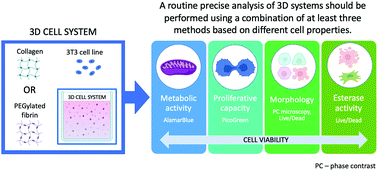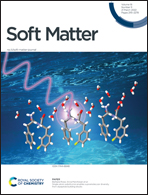3D or not 3D: a guide to assess cell viability in 3D cell systems
Abstract
Cell viability is the primary integrative parameter used for various purposes, particularly when fabricating tissue equivalents (e.g., using bioprinting or scaffolding techniques), optimizing conditions to cultivate cells, testing chemicals, drugs, and biomaterials, etc. Most of the conventional methods were originally designed for a monolayer (2D) culture; however, 2D approaches fail to adequately assess a tissue-engineered construct's viability and drug effects and recapitulate the host–pathogen interactions and infectivity. This study aims at revealing the influence of particular 3D cell systems’ parameters such as the components’ concentration, gel thickness, cell density, etc. on the cell viability and applicability of standard assays. Here, we present an approach to achieving adequate and reproducible results on the cell viability in 3D collagen- and fibrin-based systems using the Live/Dead, AlamarBlue, and PicoGreen assays. Our results have demonstrated that a routine precise analysis of 3D systems should be performed using a combination of at least three methods based on different cell properties, e.g. the metabolic activity, proliferative capacity, morphology, etc.



 Please wait while we load your content...
Please wait while we load your content...